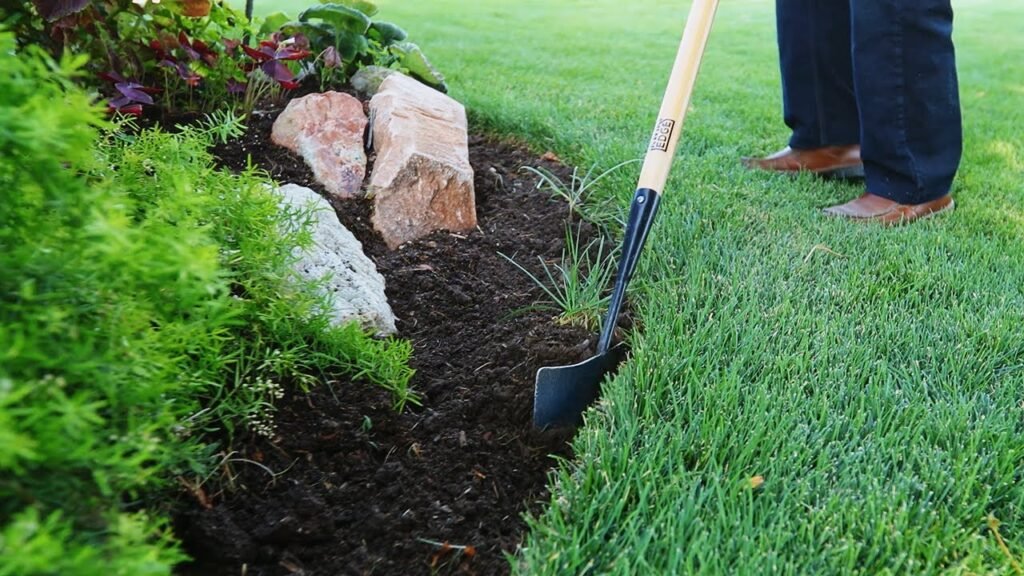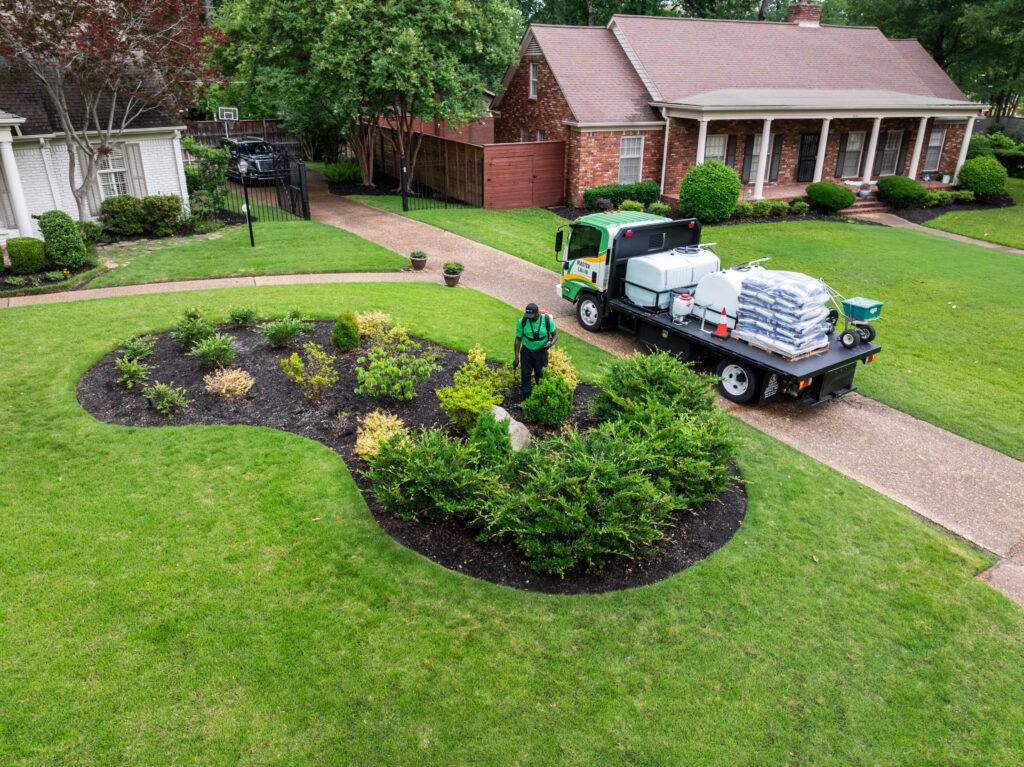Weeds are more than just an eyesore—they are persistent invaders that can choke out desirable plants, ruin the aesthetic of your yard, and even lower your property value. While diligent maintenance may keep your lawn weed-free, the real challenge often lies just over the fence: neighboring yards.
Unfortunately, even if you practice perfect lawn care, weeds from a neighbor’s neglected yard can find their way into your space. The good news is, there are practical and legal ways to stop or at least minimize the spread of weeds from next door. This article will explore effective strategies, legal considerations, landscaping solutions, and preventative measures to protect your property.
1. Understanding How Weeds Spread

To prevent weed invasion, it’s important to understand how weeds travel. Common methods include:
A. Wind Dispersal
Many weeds, like dandelions or thistles, produce seeds with light, fluffy structures that allow them to travel by wind—sometimes over considerable distances.
B. Water Runoff
Weed seeds can hitch a ride in water flowing from one yard to another, especially during heavy rains or if your yard lies downhill from the source.
C. Creeping Roots and Rhizomes
Some invasive weeds, such as Bermuda grass or horsetail, spread underground through creeping roots or rhizomes, sneaking across property lines unseen.
D. Animal or Human Traffic
Seeds can cling to pets, shoes, lawn equipment, or vehicles, unknowingly transferring from one lawn to the next.
Understanding these methods will guide you in choosing the right barriers, landscaping techniques, and maintenance routines to reduce risk.
2. Early Detection and Vigilance

The first line of defense is awareness. Regularly inspect your yard—particularly the edges where it meets a neighbor’s property—for signs of:
- New weed growth
- Soil disturbance
- Seedlings near fences
- Discoloration in your lawn (a sign of underground spread)
Routine Maintenance Checklist:
- Mow your lawn at the proper height to prevent weed seeds from receiving enough light.
- Rake and remove leaves or organic debris where weed seeds can germinate.
- Pull out weeds by the root before they can flower and produce seeds.
- Use pre-emergent herbicides early in the growing season to prevent seed germination.
3. Install Physical Barriers
A. Garden Edging
Install deep edging (6 to 12 inches underground) along the boundary of your yard to stop creeping weeds from spreading underground. Materials can include:
- Metal
- Stone
- Composite plastic
- Concrete curbing
B. Fencing with Weed Fabric
Adding a solid wooden or vinyl fence helps reduce airborne seed travel. For extra protection, you can bury landscape fabric or weed barriers just beneath the surface along the fence line.
C. Mulch Buffer Zones
Create a mulch strip or gravel buffer along the boundary to suppress weed seed germination. Mulch not only blocks sunlight but also improves soil health, making it harder for weeds to thrive.
4. Strategic Planting to Crowd Out Weeds

Another effective way to prevent weed colonization is by planting ground covers or dense foliage near your fence line. Thick vegetation can shade the soil and make it inhospitable to weeds.
Top Ground Covers to Consider:
- Creeping thyme
- Pachysandra
- Vinca minor (Periwinkle)
- Clover
- Ivy (use with caution—it can be invasive itself)
Choose native species that are aggressive enough to compete with weeds but not so aggressive that they become a problem themselves.
5. Soil Health and Fertility
Weeds tend to thrive in disturbed, compacted, or nutrient-poor soils. By improving your soil, you make it more conducive to lawn grasses and less inviting to invaders.
Steps to Improve Soil:
- Aerate annually to loosen compacted soil.
- Test your soil’s pH and adjust it to suit your desired plants.
- Add organic compost to increase nutrient levels.
- Water deeply but less frequently to encourage deep root growth.
Healthy soil supports a thick, vigorous lawn—your best defense against weed spread.
6. Use Targeted Herbicides (With Caution)

While chemical controls should never be the first line of defense, they can be effective when used responsibly.
Types of Herbicides:
- Pre-emergent herbicides: Prevent seeds from germinating.
- Post-emergent herbicides: Kill existing weeds.
- Selective herbicides: Target specific weed types without harming your lawn.
- Non-selective herbicides: Kill everything, useful only in non-lawn areas.
Always read and follow manufacturer instructions, and avoid spraying on windy days to prevent drift into neighboring yards.
7. Communicate with Your Neighbor

Sometimes, the best solution is a friendly conversation. Your neighbor may not be aware that their yard is contributing to your weed problem.
Tips for Constructive Dialogue:
- Be polite and non-confrontational.
- Use “I” statements (e.g., “I’ve noticed some weeds crossing over…”).
- Offer to collaborate or share resources (e.g., joint landscaping project or shared mulch delivery).
- If needed, provide educational materials about lawn care or city regulations.
Many neighbors will respond positively when approached respectfully.
8. Legal Considerations and Municipal Bylaws
If your neighbor refuses to maintain their yard and it becomes a nuisance, you may have legal recourse.
A. Nuisance Property Laws
Most municipalities have ordinances that require homeowners to maintain their property, including controlling invasive plants and noxious weeds.
You can:
- Document the issue with photos and dates.
- Contact your local code enforcement office.
- Submit a formal complaint if the property violates local health or safety regulations.
B. Homeowners’ Association (HOA) Rules
If you live in a managed community, your HOA may already have strict landscaping rules. Report weed issues through your HOA if a neighbor is violating agreed-upon standards.
9. Professional Lawn Care Services
If the weed invasion is severe, or if you prefer not to manage it yourself, hiring a professional lawn care company can be a wise investment.
Services May Include:
- Landscape design with anti-weed features
- Soil testing and remediation
- Professional-grade herbicide applications
- Root barriers and erosion control
- Ongoing seasonal maintenance
Experts can identify root causes, apply solutions efficiently, and help maintain a barrier between your yard and potential threats.
10. Long-Term Strategy: Create a Living Barrier
In addition to fencing, consider planting a hedge or a living wall of densely growing shrubs along your property line.
Best Shrubs for Weed Barriers:
- Boxwood
- Privet
- Juniper
- Bamboo (use only clumping types to avoid its own invasiveness)
These not only stop weeds but provide privacy, wind protection, and aesthetic value.
Conclusion
Weed spread from neighboring yards can be frustrating, but it is not inevitable. Through strategic landscaping, proactive maintenance, respectful communication, and awareness of legal rights, you can protect your lawn and maintain the integrity of your landscape.
Remember, your best tools are vigilance, cooperation, and prevention. By investing effort on your side of the fence, and gently encouraging your neighbor to do the same, you can achieve a long-term, weed-free peace.
